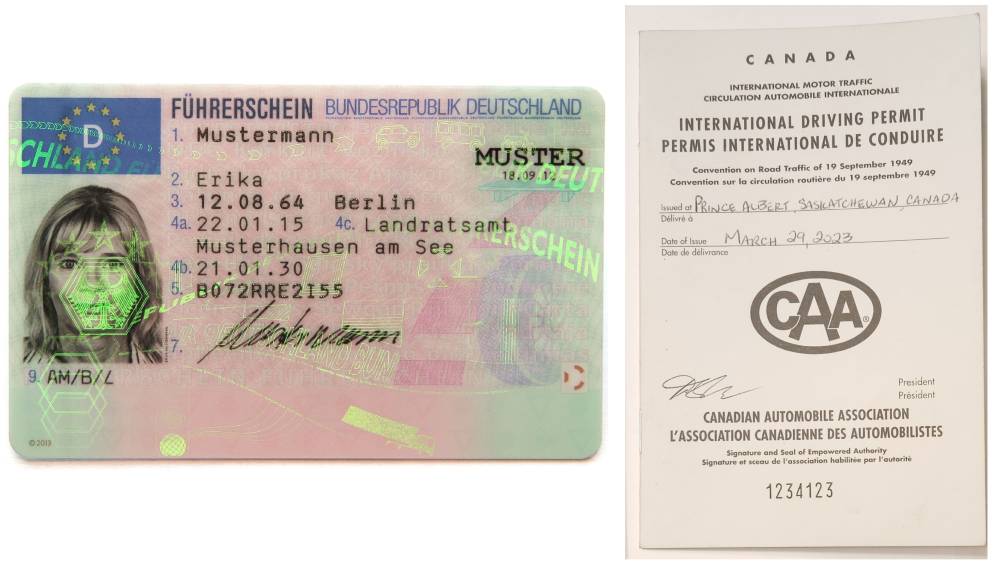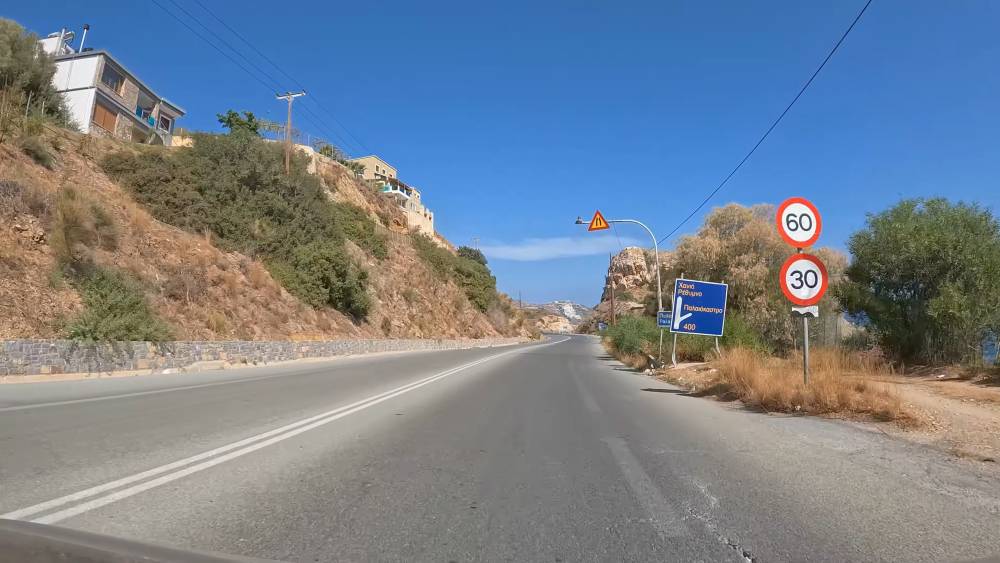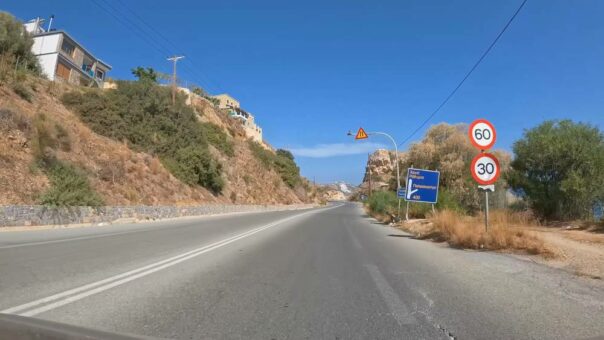When planning a trip to Crete, renting a car is one of the best ways to explore the island’s stunning landscapes, quaint villages, and hidden beaches. However, to ensure a smooth, safe, and lawful experience, it’s essential to familiarize yourself with Crete’s local driving laws and regulations. Here’s a quick guide to help you understand the key rules of the road in Crete, so you can enjoy your journey without any unexpected surprises.
1. Driving License Requirements
To drive legally in Crete, you’ll need a valid driving license. If you’re from the EU, your standard license is sufficient. Non-EU visitors will need an International Driving Permit (IDP) along with their original license. Make sure to have these documents with you at all times while driving, as local authorities may ask for them during routine checks
EU driving license specimen image. Public domain according to German copyright law (§ 5 Abs.1 UrhG), issued by a German authority / Canadian International Driving Permit image. Licensed under Creative Commons Attribution-Share Alike 4.0 International License.
2. Speed Limits and Signage
Speed limits in Crete vary depending on the road type. Here’s a quick breakdown:
- Urban Areas: 50 km/h (31 mph)
- Rural Roads: 90 km/h (56 mph)
- Highways: 120 km/h (75 mph)
Keep in mind that speed limits are strictly enforced, especially in populated areas. You’ll often see road signs in both Greek and English, which makes navigation easier for international drivers. Crete has many winding roads and sharp turns, so it’s best to drive cautiously, even if there’s little traffic.

3. Seat Belts and Child Safety
Seat belts are mandatory for all passengers in the vehicle, both in the front and back seats. Fines for not wearing seat belts are enforced and can be significant. For families traveling with young children, it’s essential to follow child safety laws:
- Children under 12 or under 135 cm in height must use a child car seat appropriate for their size and weight.
- Children in car seats must sit in the back seat for added safety.
Renting a car in Crete? Most car rental agencies offer child seats upon request, so make sure to reserve one in advance if you’re traveling with kids.
4. Mobile Phone Usage
Using a mobile phone while driving is illegal unless you’re using a hands-free system. Talking on the phone without a hands-free device or texting while driving can result in hefty fines. Crete’s roads often require full attention due to sharp turns and narrow paths, so it’s best to keep distractions to a minimum. For navigation, consider using a mounted GPS or a hands-free mobile holder.
5. Drinking and Driving
Greece has strict laws against drinking and driving, and Crete is no exception. The legal blood alcohol limit is 0.05% for most drivers, but it drops to 0.02% for motorcycle drivers and those who have held their license for less than two years. It’s advisable to avoid alcohol entirely if you plan on driving, as the consequences can be severe, ranging from heavy fines to license suspension or even jail time for high levels.
6. Parking Regulations
Parking in Crete can be challenging, especially in popular tourist areas and cities like Heraklion and Chania. Here’s what you should know:
- Blue Zones: These are paid parking areas where you’ll need to buy a ticket from a nearby kiosk or parking meter.
- White Zones: These areas are free for public parking.
- Yellow Lines: These indicate restricted parking zones, often reserved for buses, taxis, or official vehicles.
Be cautious of where you park, as illegally parked cars can be towed or fined. In crowded areas, it’s often worth paying for parking to avoid any issues.
7. Right of Way
In Greece, drivers approaching from the right generally have the right of way unless otherwise indicated. However, at roundabouts, cars entering must yield to vehicles already circulating. Always be mindful of local driving habits, as not all drivers strictly follow these rules. Cretan drivers are generally courteous, but defensive driving is key to a stress-free experience on the island.
8. Motorbike and Scooter Regulations
Crete’s scenic roads are popular among motorbike and scooter riders, but specific regulations apply. Helmets are mandatory for both drivers and passengers, and fines for not wearing them are strictly enforced. If you’re renting a scooter or motorbike, ensure it’s from a licensed rental agency and that it comes with the necessary documentation and insurance.
9. Emergency Numbers and Procedures
In case of an accident or emergency, dial 112, the European emergency number. This line connects you to all emergency services, including police, fire, and medical assistance. If you’re in a minor accident, it’s standard procedure to exchange contact and insurance information with the other driver. For more severe incidents, wait for authorities to arrive to file a report.
Driving in Crete: A Rewarding Experience
Driving in Crete offers the flexibility to explore the island’s many attractions at your own pace, from secluded beaches to historic ruins and charming villages. By keeping these local laws in mind, you’ll be prepared for a smooth, safe journey across the island. Rent a car with confidence and enjoy everything Crete has to offer, knowing you’re following the rules and respecting the local customs.
Safe travels and happy exploring!










